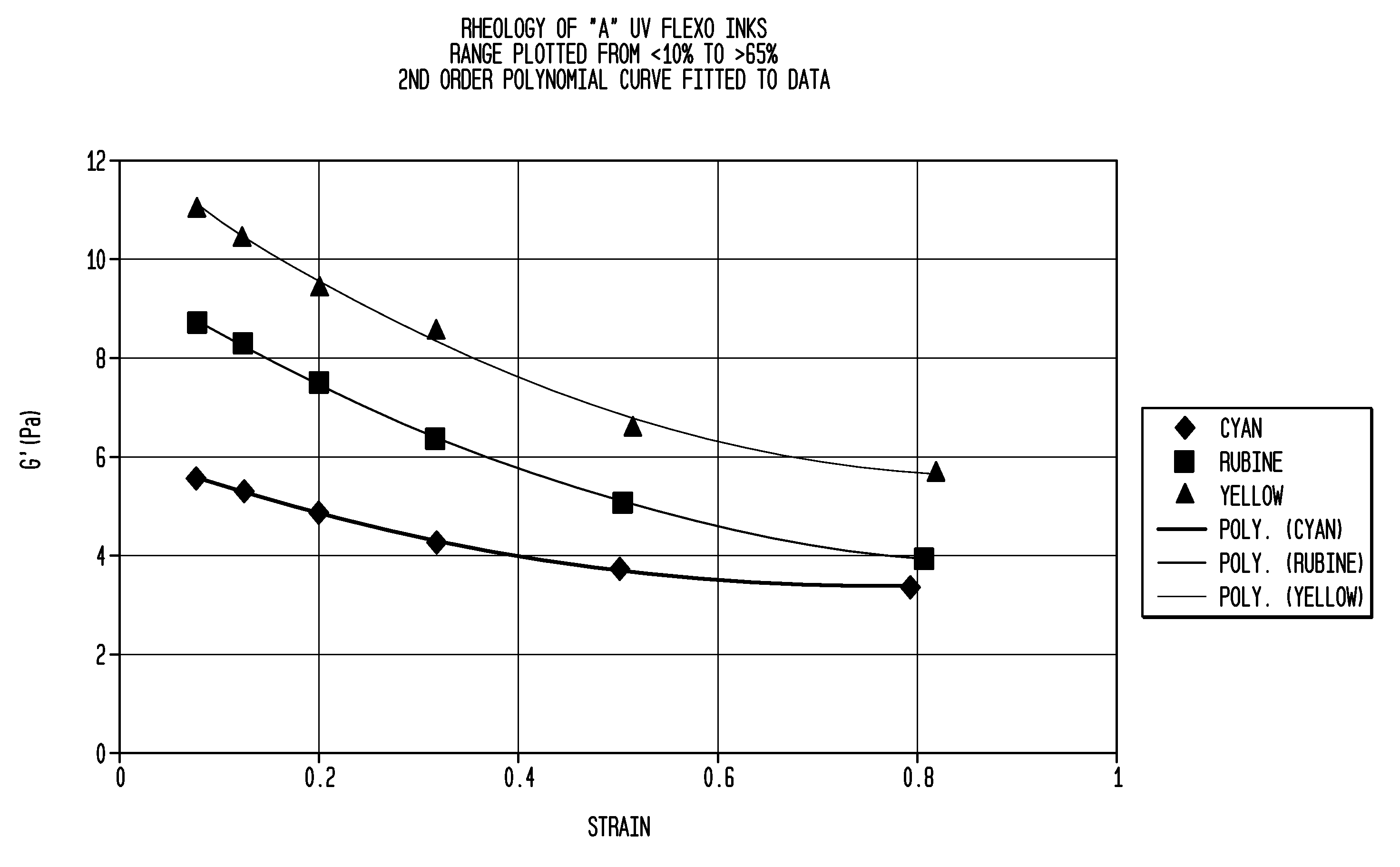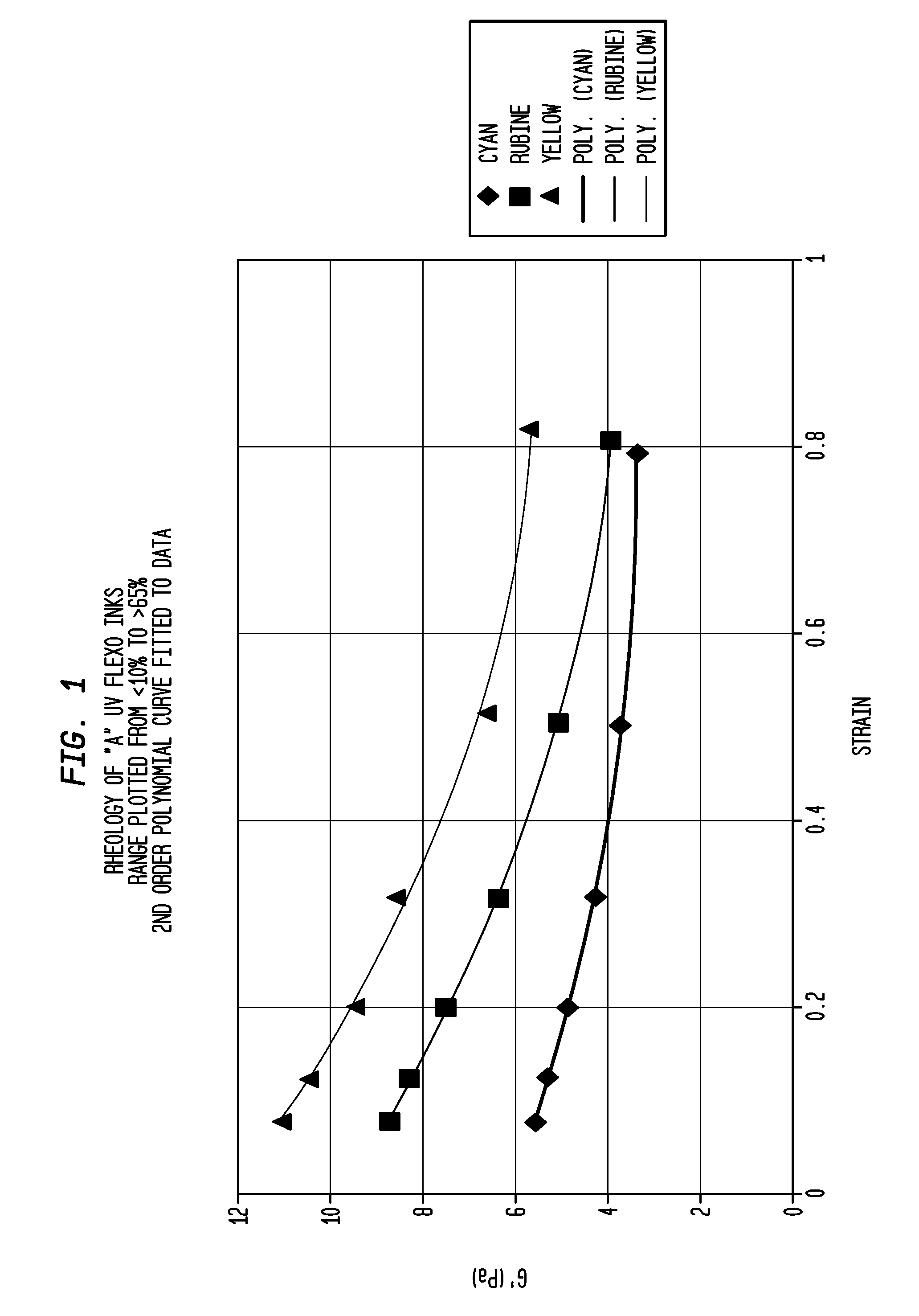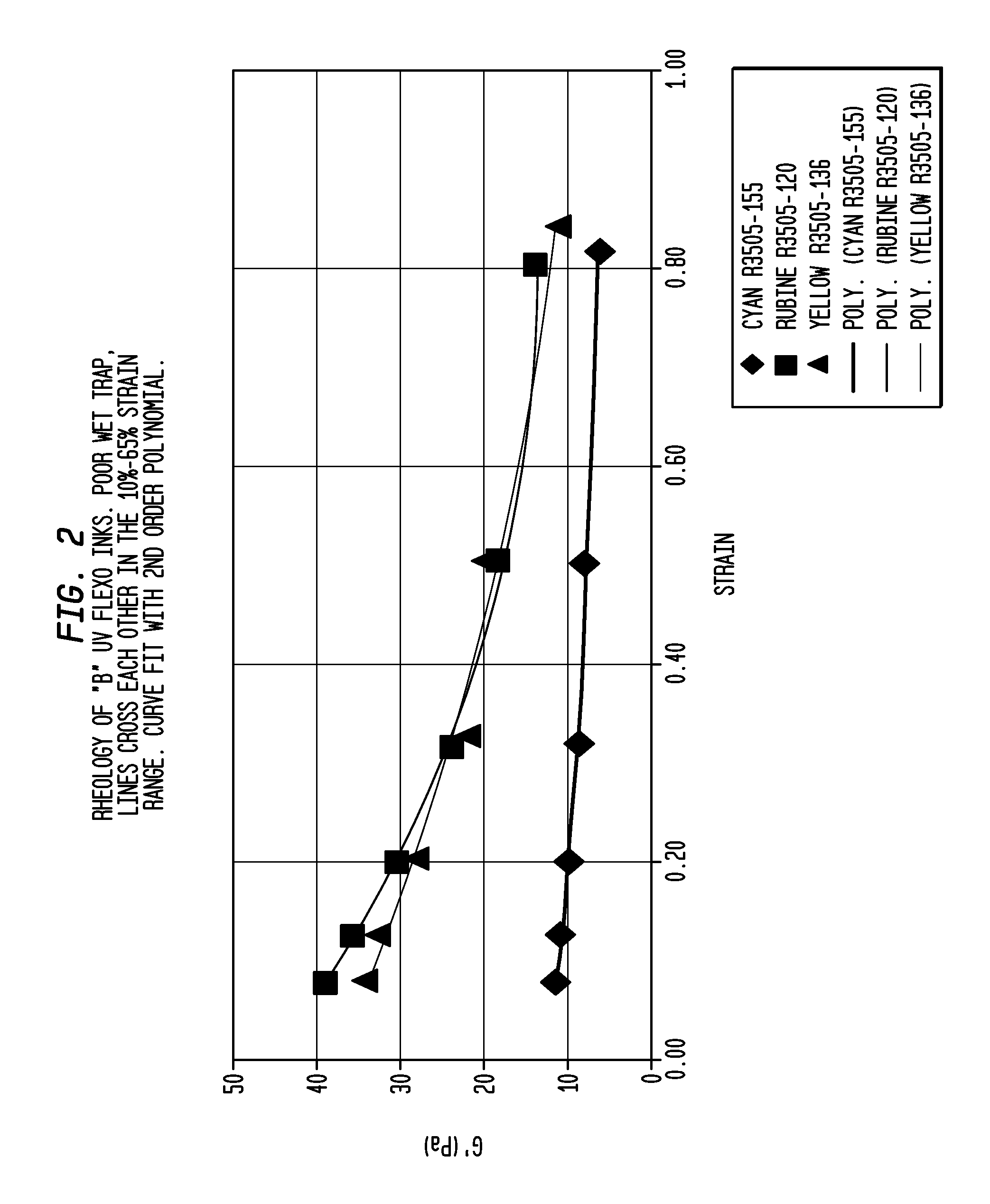Wet-trapping of energy curable flexographic inks and coatings
a technology of applied in the field of wet-trapping of energy curable flexographic inks and coatings, can solve the problems of incomplete drying, unsatisfactory color rendition, and limitations of fluidity or viscosity of inks, and achieve good trapping
- Summary
- Abstract
- Description
- Claims
- Application Information
AI Technical Summary
Benefits of technology
Problems solved by technology
Method used
Image
Examples
example 1
EC Flexo Ink Press Trial “A”
[0095]Three UV Flexo Inks were formulated for wet trapping trials on a Kopack flexo press utilizing a central impression drum. The formulation of these inks was:
Yellow A:
16.0% Yellow Pigment; selected from the First Component list above.
68.55% Oligomers, Monomers and Resins; selected from the ‘Second Component’ list above.
4.55% Additives; selected from the ‘Third Component’ list above.
10.9% Photoinitiators & Inhibitors; selected from the ‘Fourth Component’ list above.
Magenta A:
22.0% Magenta Pigment; selected from ‘First Component’ list above.
61.0% Oligomers, Monomers and Resins; selected from the ‘Second Component’ list above.
3.55% Additives; selected from the ‘Third Component’ list above.
13.45% Photoinitiators & Inhibitors; selected from the ‘Fourth Component’ list above.
Cyan A:
24.0% Cyan Pigment; selected from ‘First Component’ list above.
61.4% Oligomers, Monomers and Resins; selected from the ‘Second Component’ list above.
0.6% Additives; selected from ...
example 2
EC Flexo Ink Press Trial “B”
[0112]Three additional UV Flexo Inks were formulated for wet trapping trials on a Kopack flexo press utilizing a central impression drum. The formulation of these inks was as follows:
Yellow B:
16.0% Yellow Pigment; selected from ‘First Component’ list above.
61.83% Oligomers, Monomers and Resins; selected from the ‘Second Component’ list above.
6.17% Additives; selected from the ‘Third Component’ list above.
16.0% Photoinitiators & Inhibitors; selected from the ‘Fourth Component’ list above.
Magenta B:
22.38% Magenta Pigment; selected from ‘First Component’ list above.
58.54% Oligomers, Monomers and Resins; selected from the ‘Second Component’ list above.
8.51% Additives; selected from the ‘Third Component’ list above.
10.57% Photoinitiators & Inhibitors; selected from the ‘Fourth Component’ list above.
Cyan B:
21.82% Cyan Pigment; selected from ‘First Component’ list above.
57.43% Oligomers, Monomers and Resins; selected from the ‘Second Component’ list above.
1.45% ...
example 3
EC Flexo Ink Press Trial “C”
[0140]The example inks used in Trial “B” were mixed with a thickening compound to manipulate the G′ of the inks, and the trial was run again.
R3505-136
Thickened_Yellow
50% R3505-136 (Ink “B”)
45% UV Flexo Extender
5% Fumed Silica
R3505-120
Thickened_Magenta
50% R3505-120 (Ink “B”)
45% UV Flexo Extender
5% Fumed Silica
R3505-155
Thickened_Cyan
50% R3505-155 (Ink “B”)
45% UV Flexo Extender
5% Fumed Silica
Name of Ink: UV Flexo Extender
0.0% Pigment; selected from ‘First Component’ list above.
89.7% Oligomers, Monomers and Resins; selected from the ‘Second Component’ list above.
0.3% Additives; selected from the ‘Third Component’ list above.
10.0% Photoinitiators & Inhibitors; selected from the ‘Fourth Component’ list above.
[0141]The rheology of each of the inks was measured as above, the resulting measurements are recorded as follows.
[0142]
Yellow C (R3505-136_Thickened_Yellow)osc. stressdeltaG′G″(Pa)strain(degrees)(Pa)(Pa)0.59680.01541759.0320.3733.940.59680.01498158.5221.273...
PUM
| Property | Measurement | Unit |
|---|---|---|
| Thickness | aaaaa | aaaaa |
| particle size | aaaaa | aaaaa |
| distance | aaaaa | aaaaa |
Abstract
Description
Claims
Application Information
 Login to View More
Login to View More - R&D
- Intellectual Property
- Life Sciences
- Materials
- Tech Scout
- Unparalleled Data Quality
- Higher Quality Content
- 60% Fewer Hallucinations
Browse by: Latest US Patents, China's latest patents, Technical Efficacy Thesaurus, Application Domain, Technology Topic, Popular Technical Reports.
© 2025 PatSnap. All rights reserved.Legal|Privacy policy|Modern Slavery Act Transparency Statement|Sitemap|About US| Contact US: help@patsnap.com



